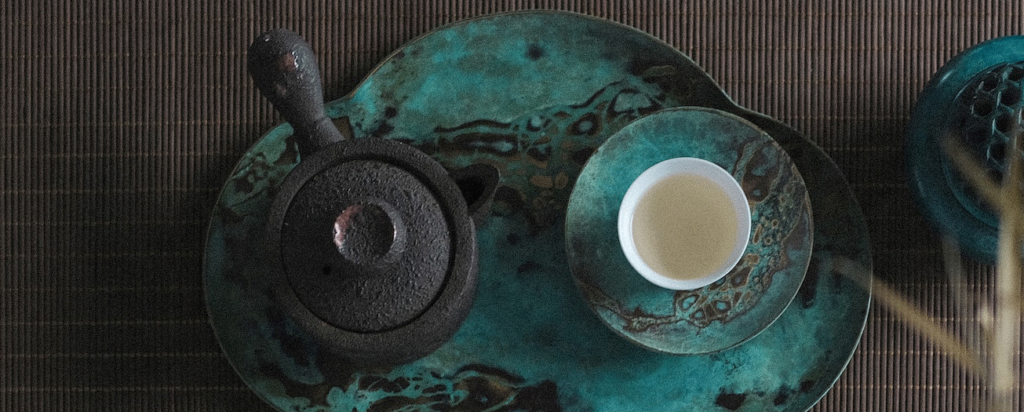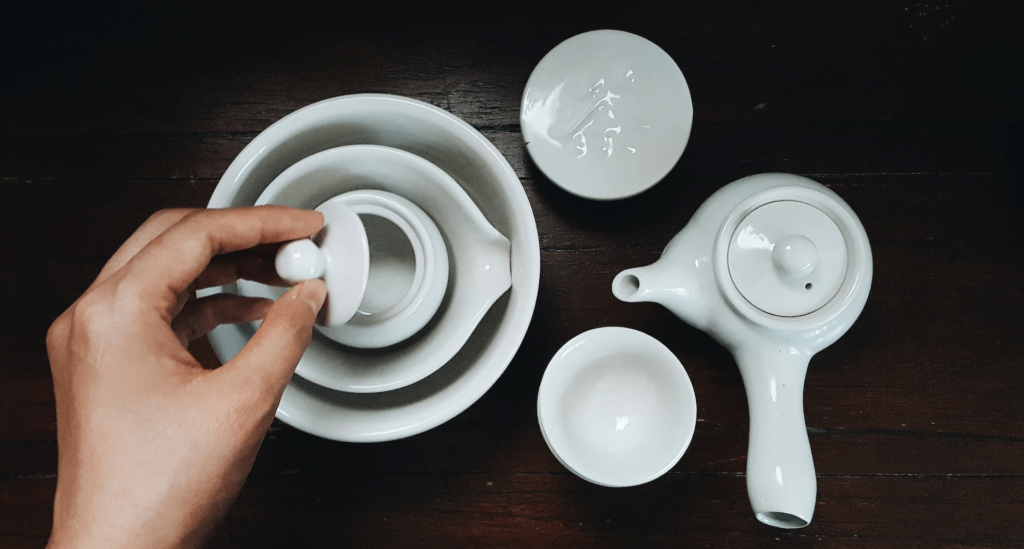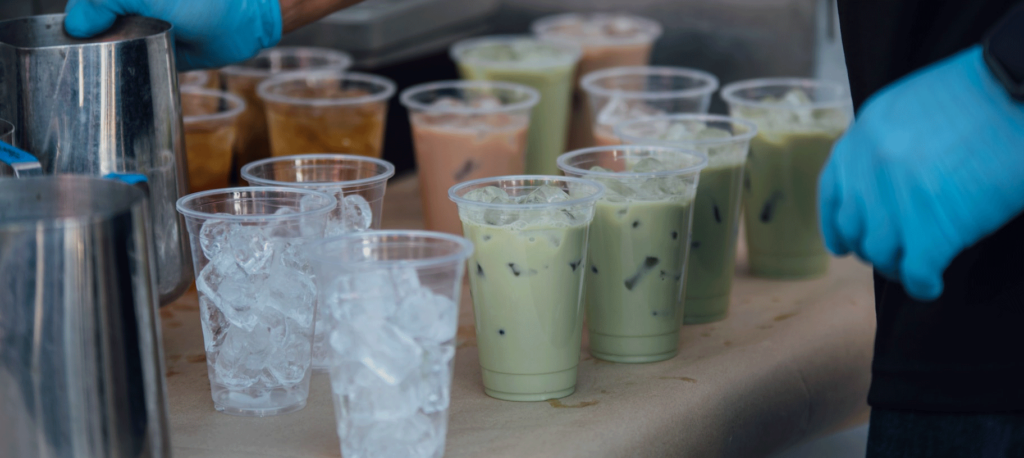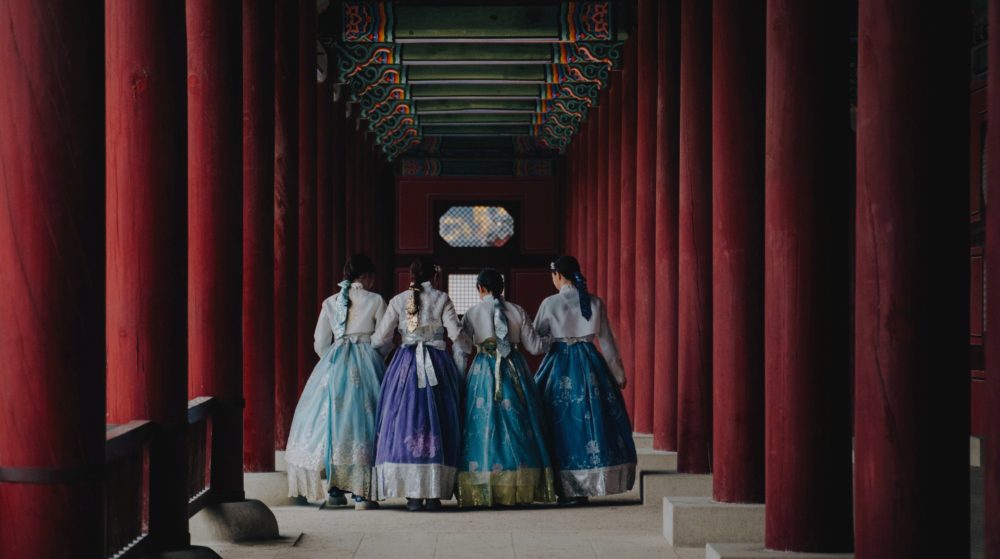Table of Contents
Introduction
Unveiling the Rich Tapestry of Korean Tea Culture
Step into the enchanting world of Korean tea culture, where traditions steeped in history meet the serene tranquility of nature. Korean tea culture is a treasure trove of rituals, flavors, and experiences waiting to be explored. In this journey, we will embark on a delightful exploration of the unique and captivating aspects that define Korean tea culture, uncovering its deep-rooted traditions and the profound sense of tranquility it imparts.
“Korean Tea Culture”
Korean tea culture is a captivating world with a history spanning centuries. In this article, we delve into the heart of Korean tea culture, shedding light on its rich traditions and the significance it holds in Korean society. Join us as we immerse ourselves in the art of Korean tea, from the cultivation of tea leaves to the time-honored rituals and the exquisite flavors that define this cultural gem.
A Preview of the Cultural Gems Explored in this Article
Our journey into Korean tea culture will take us through various aspects that make it a unique and cherished tradition. We’ll start by delving into the historical roots of Korean tea, exploring how it was introduced and evolved over time. Then, we’ll uncover the art of tea preparation and the rituals associated with it. From there, we’ll venture into the world of Korean tea varieties and the flavors that tantalize the taste buds. We’ll also discover the role of Korean tea in hospitality and social interactions, where it goes beyond a beverage to create meaningful connections. The exquisite tea ware used in Korean tea ceremonies will be highlighted, showcasing the artistic beauty of the culture. Finally, we’ll examine modern innovations and the enduring legacy of Korean tea culture as it continues to flourish in the contemporary world.
Join us as we sip, savor, and explore the delightful traditions, tranquil moments, and exquisite flavors that define Korean tea culture.
Historical Roots of Korean Tea Culture
Introduction of Tea to Korea: A Glimpse into Ancient Times
Our journey into Korean tea culture begins with a step back in time to explore the introduction of tea to the Korean Peninsula. It is a story that dates back over a thousand years, when tea seeds and the art of tea preparation first found their way to Korea. Tracing this historical thread, we unravel the early roots of Korean tea culture and its initial cultivation in the fertile lands of Korea. The tea journey in Korea begins in ancient times, and we’ll unlock the secrets of how this simple leaf became an integral part of Korean heritage.
The Birth of Korean Tea Ceremony: Darye, the “Way of Tea”
The heart of Korean tea culture beats within the elegant rituals of the Korean tea ceremony, known as Darye or the “Way of Tea.” It is a ceremony deeply rooted in tradition and philosophy, where every gesture and moment is a reflection of mindfulness and respect. As we explore this unique Korean tradition, we’ll uncover the origins of Darye, its ceremonial practices, and the profound spiritual connection it fosters. The Korean tea ceremony is more than a ritual; it is a living testament to the essence of Korean culture and a source of tranquility and reflection.
Buddhism’s Influence: Shaping Korean Tea Culture and Spirituality
Buddhism, with its emphasis on mindfulness and presence, has played a pivotal role in shaping Korean tea culture and spirituality. As we dive into the historical tapestry of Korean tea, we’ll discover how Buddhism became intertwined with tea practices. The cultivation of tea and its use in monastic life brought about a profound connection between tea, meditation, and enlightenment. We’ll explore how this influence continues to resonate in the rituals and philosophy of Korean tea culture today, making it a unique blend of tradition and spirituality.
Korean Tea Ceremony (Darye)
Darye Unveiled: The Essence of Korean Tea Ceremonies
At the heart of Korean tea culture lies the Darye, a serene and elegant tea ceremony that encapsulates the very essence of Korean traditions. In this section, we’ll pull back the curtains and unveil the beauty and philosophy that define Darye. The Korean tea ceremony is a dance of mindfulness, a moment of tranquility, and a celebration of culture. Join us as we delve into the core principles that underpin Darye, from the preparation of tea to the grace of serving it, and discover how this cherished tradition has shaped Korean identity over the centuries.
Essential Elements: Preparing, Serving, and Savoring Korean Tea
A Korean tea ceremony is a symphony of meticulous steps and graceful movements. In this segment, we’ll explore the essential elements that make up the choreography of a Korean tea ceremony. From the precise preparation of tea leaves to the artful arrangement of utensils, each element has a purpose and significance. We’ll delve into the methods of brewing and serving Korean tea, the symbolism behind every gesture, and the deep connection between tea and Korean cultural heritage. Through these intricate rituals, we’ll gain a profound appreciation for the beauty and grace that define Korean tea culture.
Harmony of Nature and Ritual: A Deep Dive into Darye
Nature and ritual converge in the Korean tea ceremony, creating a harmonious blend that mirrors the Korean landscape itself. In this part of our exploration, we’ll take a deep dive into the interplay between nature and ceremony in Darye. The choice of teahouse location, the use of natural materials in utensils, and the seasonal aspects of Korean tea culture all reflect a profound respect for the environment and the changing seasons. We’ll uncover the spiritual connection between Koreans and the natural world through their tea rituals, gaining insight into how Korean tea culture finds tranquility in the embrace of nature.
Korean Tea Varieties and Traditions

Majesty of Green Tea: Preparing and Appreciating Korean Green Teas
Green tea takes center stage in Korean tea culture, embodying purity, freshness, and a deep connection to nature. In this segment, we’ll immerse ourselves in the world of Korean green teas, known for their vibrant flavors and health benefits. From the iconic Sejak and Jungjak to the exquisite Daejak, we’ll explore the nuances of Korean green tea preparation, including the gentle steaming and pan-firing methods that preserve the tea’s natural essence. With each sip, you’ll embark on a sensory journey through the lush tea fields of Korea, discovering the subtleties that make Korean green teas a source of pride for the nation.
Beyond Green Tea: Exploring Balhyocha and Other Unique Varieties
While green tea takes the spotlight, Korean tea culture boasts a rich tapestry of tea varieties, each with its own distinct character. In this section, we’ll venture beyond green tea and delve into the world of Balhyocha, a uniquely Korean partially oxidized tea. We’ll also uncover the charm of specialty teas like Nokcha and Tisanes, which showcase the versatility of Korean tea culture. From the crafting process to the tasting notes, we’ll provide an in-depth look at these lesser-known yet captivating teas, inviting you to broaden your tea horizons and savor the diversity of Korean tea traditions.
Celebrating Nature’s Rhythms: Charye, Tea Rituals for Different Seasons
Korean tea culture is deeply attuned to the changing seasons, and nowhere is this more evident than in the practice of Charye, seasonal tea rituals. In this part of our exploration, we’ll journey through the annual cycle of Charye, which pays homage to nature’s rhythms. From the vibrant colors of spring to the tranquil beauty of winter, each season brings its own unique rituals and tea varieties. We’ll unravel the significance of Charye in Korean culture, how it fosters a deep connection to the natural world, and how it serves as a reminder of the ever-turning wheel of time. By understanding the role of Charye, you’ll gain insight into the profound bond between Koreans and their tea traditions.
Tea and Korean Hospitality
Heartfelt Gesture of Preparing Tea for Guests
In Korean culture, hospitality is often expressed through the act of preparing and sharing tea with guests. This deeply ingrained tradition showcases warmth, respect, and genuine care for one’s visitors. In this section, we’ll explore the art of hosting in Korean tea culture. You’ll learn about the meticulous preparations that go into serving tea to guests, from choosing the right tea to the elegant arrangement of utensils. Whether it’s a formal gathering or an intimate teatime chat, you’ll discover the profound significance of this cherished gesture and how it has been a bridge for forging meaningful connections in Korean society.
Chasabal: The Beauty of Korean Tea Bowls
Central to the Korean tea experience is the chasabal, or tea bowl. These exquisite vessels are more than just functional; they are works of art, each with its unique shape, glaze, and character. We’ll take a closer look at the craftsmanship behind Korean tea bowls and how they enhance the tea-drinking experience. From the earthy simplicity of Buncheong to the refined elegance of Goryeo celadon, you’ll gain an appreciation for the diverse styles of chasabal and how they elevate the act of savoring tea to an aesthetic delight.
Hanok and Tea Houses: Where Tranquility Meets Tradition
The setting in which one enjoys tea can significantly influence the experience. In Korea, traditional hanok houses and modern tea houses provide serene backdrops for tea gatherings. In this part of our journey, we’ll step into the world of Korean architectural aesthetics and its harmonious relationship with tea culture. Whether it’s the rustic charm of a traditional hanok or the contemporary elegance of a tea house, you’ll discover how these spaces are designed to create an atmosphere of tranquility and contemplation, where tea enthusiasts can escape the bustle of daily life and immerse themselves in the meditative ritual of tea.
Korean Tea Ware and Artistry

Artisan’s Craft: Korean Teapots and Ceramic Masterpieces
Korean tea culture places a strong emphasis on the artistry and craftsmanship of tea ware, particularly teapots and ceramic vessels. In this section, we’ll delve into the world of Korean teapots and their role in enhancing the tea experience. From the meticulous hands of artisans, these teapots are not just functional but true works of art. We’ll explore the various styles and techniques used in crafting Korean teapots, each with its unique charm and character. Whether it’s the elegant simplicity of onggi teapots or the intricate designs of buncheongware, you’ll gain an appreciation for the dedication and skill that goes into creating these ceramic masterpieces.
Aesthetic of Imperfection: Finding Beauty in Wabi-Sabi
Wabi-sabi is a Japanese concept that celebrates the beauty of imperfection, impermanence, and the patina of time. In Korean tea culture, a similar appreciation for wabi-sabi values is evident. We’ll explore how Korean tea ware, with its rustic and natural aesthetics, embodies the principles of wabi-sabi. From the earthy textures of unglazed pottery to the subtle variations in glaze patterns, you’ll learn how imperfections are not flaws but rather symbols of authenticity and the passage of time. This profound philosophy adds depth and meaning to the act of savoring tea in Korean culture.
Collecting and Nurturing an Appreciation for Korean Tea Ware
Collecting and nurturing an appreciation for Korean tea ware is a passion shared by many tea enthusiasts. In this part of our journey, we’ll offer insights into starting and maintaining a collection of Korean tea ware. From understanding the diverse styles and periods of Korean ceramics to caring for your treasured pieces, you’ll gain valuable tips and knowledge for embarking on your own tea ware journey. Whether you’re a seasoned collector or a novice, there’s always more to explore and discover within the world of Korean tea ware, and we’ll guide you on this rewarding path.
Modern Innovations and Korean Tea Culture

Contemporary Korean Tea Trends: From Tea Blends to Boba Tea
Korean tea culture is not frozen in time; it continues to evolve and adapt to contemporary tastes and preferences. In this section, we’ll explore the exciting developments in Korean tea trends. From innovative tea blends that combine traditional ingredients with a modern twist to the rising popularity of boba tea, also known as bubble tea, throughout Korea, you’ll discover how Korean tea culture remains vibrant and dynamic. Learn about the fusion of flavors and the creativity of tea artisans as they craft unique blends to cater to diverse palates. Whether you’re intrigued by the boldness of fruit-infused teas, the subtlety of herbaceous blends, or the delightful texture of boba pearls in your tea, Korean tea culture has something to offer every tea lover.
Themed Tea Experiences and Cultural Revival
Korean tea culture goes beyond the simple act of drinking tea; it encompasses a holistic experience deeply rooted in tradition. In this part of our exploration, we’ll uncover the world of themed tea experiences that allow participants to immerse themselves in the rich tapestry of Korean culture. From traditional tea ceremonies that transport you to ancient times to cultural events that celebrate the artistry of tea ware and craftsmanship, you’ll gain insight into how Koreans are preserving and reviving their heritage through these immersive experiences. Whether you’re a tourist seeking an authentic taste of Korea or a local looking to reconnect with your roots, these themed experiences provide a deeper understanding of Korean tea culture.
Dance of Tradition and Modernity: A Contemporary Tea Landscape
In the ever-evolving landscape of Korean tea culture, tradition and modernity gracefully coexist. This final part of our journey delves into how contemporary Koreans balance the timeless rituals of tea with the demands of a fast-paced world. Discover how tea continues to play a vital role in Korean society, whether it’s the calming influence of a cup of tea after a long day, the delightful indulgence of boba tea on a sunny afternoon, or the communal spirit of sharing tea with loved ones. We’ll explore how technology has made its mark on tea culture, from online tea communities to mobile apps that help enthusiasts track their tea journeys. As we conclude our exploration, you’ll see that while Korean tea culture may have deep historical roots, it remains an integral part of the modern Korean identity, offering tranquility and connection in an ever-changing world.
Korean Tea Culture as a Way of Life
Beyond Ceremonies: Tea as a Philosophy of Balance
Korean tea culture transcends the boundaries of ritual and extends into a profound philosophy of balance and harmony. In this segment, we’ll delve deeper into how tea becomes a way of life for many Koreans. It’s not just about the ceremonies or the specific tea blends; it’s about finding equilibrium in a bustling world. We’ll explore the Korean concept of “Dado” or “The Way of Tea,” which emphasizes mindfulness, simplicity, and the appreciation of life’s fleeting moments. You’ll gain insight into how Korean tea culture fosters a sense of equilibrium, allowing practitioners to find tranquility in the midst of life’s chaos.
Korean Tea Garden: An Oasis of Natural Harmony
Korean tea culture is intimately connected with nature, and this connection is perhaps most beautifully expressed in the Korean tea garden. In this part, we’ll take you on a journey through these serene spaces where the artistry of landscape design meets the tranquility of tea. You’ll discover how Korean tea gardens are carefully designed to reflect the principles of balance, simplicity, and natural beauty. We’ll delve into the design elements, from meticulously arranged stones to carefully pruned trees, that create an oasis of calm in the heart of urban life. Whether you’re strolling through a traditional Korean tea garden or exploring a modern urban sanctuary, these green spaces offer a respite from the hectic pace of daily existence.
Tea as a Daily Ritual: Embracing Simplicity and Serenity
In the final part of our exploration, we’ll examine how Korean tea culture isn’t confined to special occasions or ceremonies. It’s a daily ritual, an embodiment of simplicity and serenity. We’ll look at how many Koreans incorporate tea into their everyday lives, from sipping a calming brew in the morning to sharing tea with family and friends in the evening. Discover how the act of making and drinking tea becomes a meditative practice, a moment to pause and appreciate the present. Whether you’re savoring the delicate flavors of green tea or the earthy notes of traditional Korean brews, you’ll come to understand how Korean tea culture encourages us all to find solace in the simplicity of a single cup of tea.
Conclusion
Reflecting on the Timeless Elegance of Korean Tea Culture
Our journey through the captivating world of Korean tea culture has allowed us to witness its timeless elegance. We’ve explored its historical roots, its rich traditions, and its profound connection with nature. We’ve marveled at the artistry of Korean tea ware and the warmth of Korean hospitality. And we’ve seen how tea is not just a beverage but a way of life—a philosophy that teaches balance, a connection to nature, and an appreciation for simplicity.
Embracing the Way of Tea in Your Own Journey
As we conclude this exploration, we invite you to embrace the essence of Korean tea culture in your own tea journey. Whether you’re a seasoned tea connoisseur or just beginning to discover the world of tea, there’s much to learn from the Korean way of tea. Consider incorporating elements of mindfulness, balance, and simplicity into your tea rituals. Explore the world of Korean teas, and savor the unique flavors and aromas they offer. And remember that tea is more than a beverage; it’s a source of tranquility and connection in a busy world.
Welcoming Your Questions, Comments, and Tea Stories
We hope this journey has piqued your curiosity and kindled your appreciation for Korean tea culture. We welcome your questions, comments, and personal tea stories. Whether you’re sharing your own experiences with Korean tea or seeking further insights, we’re here to engage in a tea-infused conversation. Join us in celebrating the traditions, tranquility, and taste of Korean tea culture, and may your own tea journey be filled with serenity and discovery.
Related Articles
Enriching World of Tea Culture: A Journey Through Key Traditions
Exploring Indian Tea Culture: From Chai to Assam, a Journey Through History
Exploring Chinese Tea Culture: Tracing the Path of Tradition and Flavor

